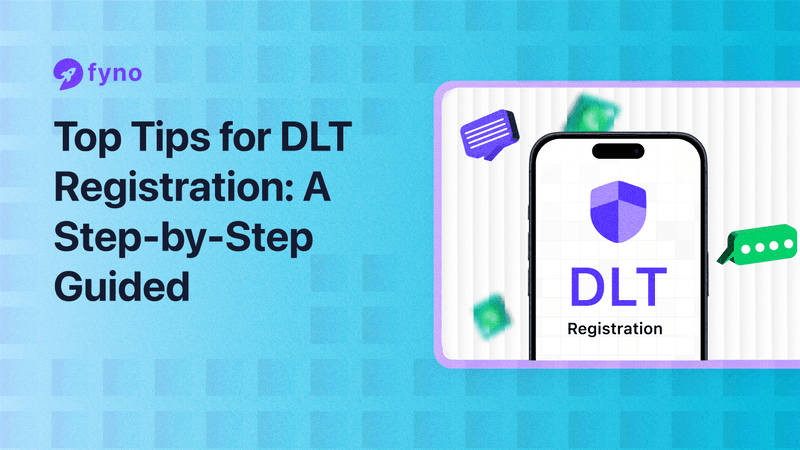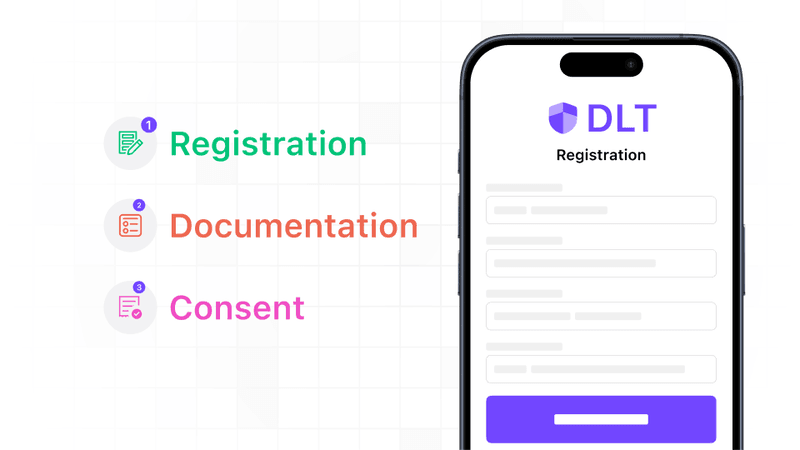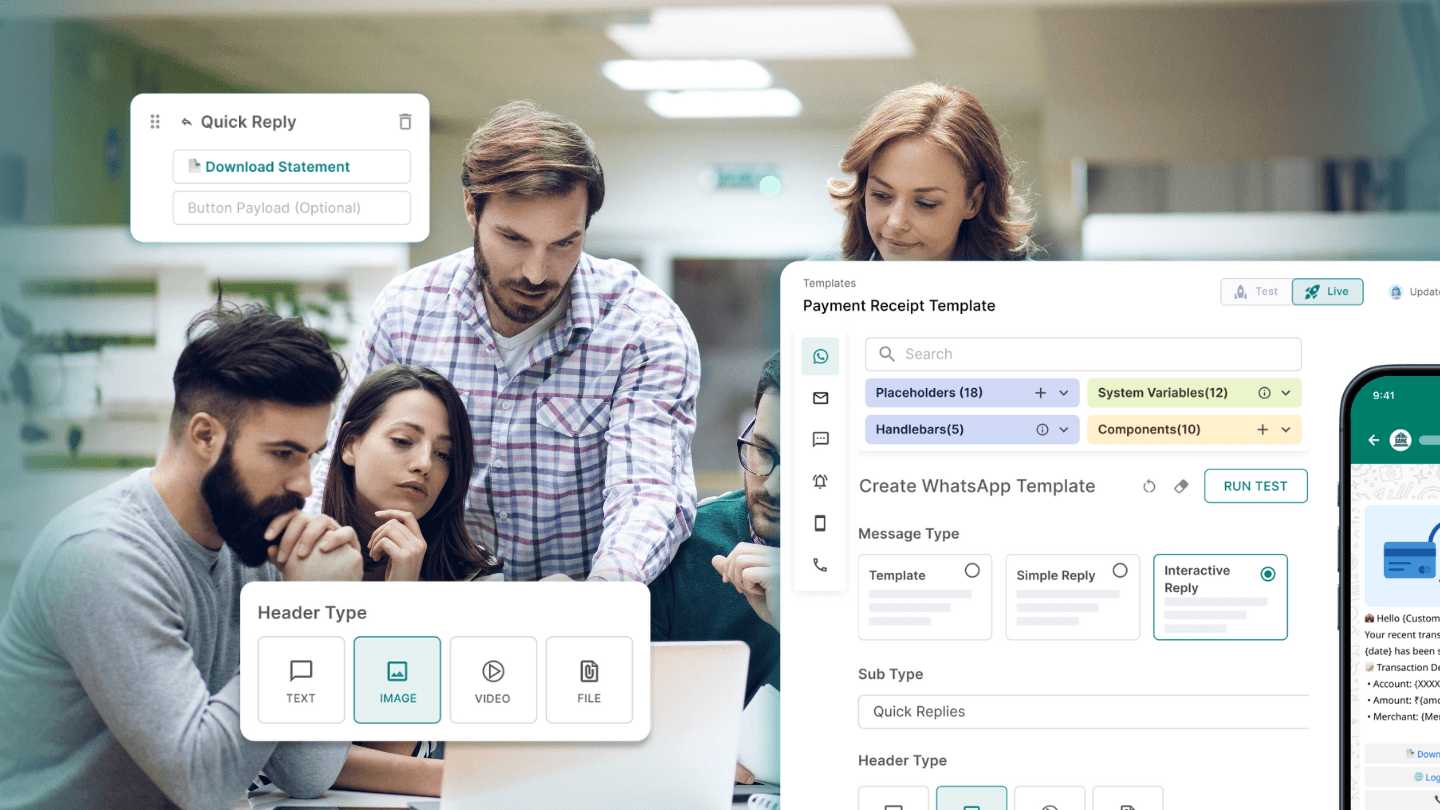What is DLT registration?
Distributed Ledger Technology (DLT) is a blockchain-based registration system designed to enhance the integrity and security of digital communications, particularly in sectors like telemarketing. DLT provides a robust framework for recording and verifying transactions without centralised control, promoting transparency and reducing fraud.
This technology ensures that every network participant can access a consistent copy of the ledger, decreasing the risk of tampering and unauthorised data modifications. Such systems are especially crucial in environments where data integrity and transparency are paramount, such as financial services and healthcare.

Why is DLT registration crucial?
For businesses engaged in telemarketing and bulk communication, DLT registration plays a pivotal role in complying with regulatory requirements and enhancing customer trust. By registering on a DLT platform, entities can manage and authenticate their communication templates and sender IDs, ensuring their bulk SMS messages are delivered without being flagged as spam. This registration is crucial in controlling SMS spam, a significant issue in countries with many mobile users and extensive telemarketing activities.
For example, the Telecom Regulatory Authority of India (TRAI) mandates DLT registration to curb unsolicited commercial communication, safeguarding both consumers’ interests and businesses’ reputations.
Getting started with DLT registration
Before diving into Distributed Ledger Technology (DLT) registration, it's crucial to understand its significance. DLT registration ensures the legitimacy and compliance of your SMS campaigns, enhancing transparency and reducing spam. It involves several stakeholders, including service providers, telecom operators, and regulatory bodies like the Telecom Regulatory Authority of India (TRAI).

Preparing for DLT registration: Required documents and registration
To kickstart your DLT registration, gather essential documents, including your business PAN, GST certificate, and proof of address, such as a utility bill or bank statement. You’ll also need an authorization letter and identification documents such as an Aadhar card or voter ID. It is crucial to register on DLT platform to ensure compliance with telecom regulations and avoid common registration issues.
For SMS headers and Voice CLIs, register your sender ID—a unique identifier for your business to send SMS or voice messages. This ID will represent your brand in communications and is crucial for ensuring that your messages are recognized as legitimate.
Sender ID registration
Entity registration: Start by registering your business as a principal entity on a telecom service provider’s DLT platform. This involves submitting your company’s details along with the necessary documents.
Sender ID registration: Create a sender ID for your SMS campaigns once your entity is registered. This ID is crucial for all promotional, transactional, and service messages. Each type requires specific formats and prerequisites, especially regarding content and recipient consent.
Template registration: Register the templates of your SMS messages for approval. This ensures that your messages adhere to regulatory standards and are clear of any misleading or unauthorized content.
Registering a template on DLT is a mandatory step for Principal Entities to acquire consent from subscribers. Each template will receive a unique template ID post-approval, which is necessary for sending messages.
To learn in detail about the steps to register, we have written a separate blog to explain how to register on DLT.
Mastering content template registration
To begin with, ensure you understand the template requirements as mandated by the Telecom Regulatory Authority of India (TRAI). This includes clearly defining specific information like the sender ID and message content. The typical time frame for DLT template approval ranges between 3-7 days, and potential delays due to queue backlogs should be anticipated.
4 tips for creating effective content templates
Define the purpose: Start by clearly defining the purpose of your message. You need to ensure that whether it’s a transaction notification or a promotional message, the clarity of purpose aligns with the user’s expectations and compliance standards.
Keep it concise: A content template should be concise and to the point. Ensure the message is easy to read and understand, avoiding unnecessary jargon or complex language.
Include call-to-action (CTA): If applicable, incorporate a strong call to action. This could be a prompt to visit a website, a request to confirm receipt or any action you want the recipient to take.
Use dynamic fields wisely: Use dynamic fields for templates that require personalization, like names or appointment dates. This allows you to customise messages for each recipient without needing multiple templates.
Example: A bank informs its customers about a scheduled downtime via SMS, using a template that clearly states the reason for the message and provides a timeframe, enhancing transparency and trust.
Uploading and registering content templates
Prepare your template: Before uploading, double-check your template for compliance with DLT guidelines. This includes having the correct sender ID and ensuring the content adheres to the regulatory standards.
Upload to the DLT platform: Access the DLT platform, navigate to the content template section, and upload your template. You’ll need to provide details like the template ID, which helps track and manage different templates.
Approval process: Once uploaded, the telecom operator will review the template. You may need to revise and resubmit the template if there are discrepancies or issues.
Activation: Upon approval, the template becomes active and can be used to send messages. Monitor the performance and reception of your messages to make any necessary adjustments.
Example: A logistics company uses DLT-registered templates to notify customers about package delivery statuses, improving customer satisfaction through timely and accurate communications.
Navigating DLT operators and onboarding
Navigating the landscape of DLT (Distributed Ledger Technology) operators is crucial for businesses engaging in SMS communications in India. Major telecom providers like Vodafone Idea, Videocon, Airtel, BSNL, Jio, and Tata Teleservices offer platforms essential for regulatory compliance and businesses must register on the DLT platform to avoid message delivery failures.
These platforms facilitate the registration and management of sender IDs and templates, which are mandatory under TRAI guidelines to combat spam and ensure message authenticity.
Onboarding process for DLT registration
The onboarding process for DLT registration is straightforward but detailed, involving several key steps:
Account creation: Begin by selecting a DLT operator and creating an account on their platform. Click on the 'Create Account' button and provide basic business information and contact details.
Document submission: Upload necessary documents, such as identity proof, address proof, and business registration details, to verify your business’s legitimacy.
Payment of fees: The first operator you register with must charge a registration fee. This fee covers the cost of processing and maintaining your DLT records.
Sender ID registration: Once your documents are approved, you can register your sender ID, which will be used to identify your messages to recipients.
Template approval: Submit your messaging templates for approval. These templates should comply with the regulatory framework to ensure they are free from spammy or fraudulent content.
Final verification: After your templates and sender IDs are approved, you undergo a final verification process to start sending messages.
Overcoming common challenges in DLT registration
The complexity of the process: The DLT registration process can often seem daunting due to its detailed documentation requirements, technical settings, and compliance with regulatory standards. Simplifying the process with a clear checklist and understanding the requirements in advance can mitigate these issues.
Technical difficulties: Integration issues like API configurations or system compatibility are common. Engaging with technical support early in the process and ensuring your systems are compatible with DLT platforms can prevent delays.
Regulatory understanding: Keeping up-to-date with TRAI’s regulations can be challenging. Regular training for your team on compliance changes and active engagement with DLT forums or webinars can help you stay informed and compliant.
This is where Fyno comes in handy. It helps you handle your DLT content and template approvals on a single, user-friendly interface. To learn more, visit our blog, navigating the complexities of DLT registration with Fyno.
FAQs
1. What is DLT Registration?
DLT Registration refers to registering on a Distributed Ledger Technology platform, which is a blockchain-based system designed to secure and authenticate digital communications, particularly in telemarketing.
2. Why is DLT Registration important for businesses?
DLT Registration is crucial because it ensures that your SMS communications comply with regulatory standards, reducing the risk of your messages being flagged as spam and enhancing customer trust.
3. What documents are required for DLT Registration?
Required documents typically include your business PAN, GST certificate, proof of address, and identification documents like an Aadhar card or voter ID.
4. How do I register a Sender ID on a DLT platform?
First, complete your entity registration on the DLT platform to register a Sender ID. Then, create and register your unique Sender ID, which will be used in all your communications.
5. What is a content template in DLT Registration?
A content template is a predefined format for the SMS messages that you register on the DLT platform. It ensures that your messages comply with regulatory standards and can be sent without issues.
6. How long does it take to approve a template on the DLT platform?
Template approval typically takes 3-7 days, depending on the platform’s review process and potential backlogs.
7. What should I do if I face technical difficulties during DLT Registration?
If you encounter technical difficulties, contact the DLT platform's technical support team early and ensure your systems are compatible with the platform to avoid delays.


